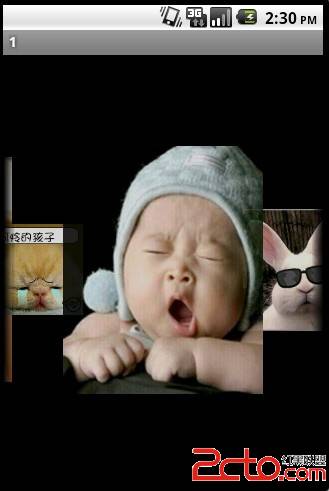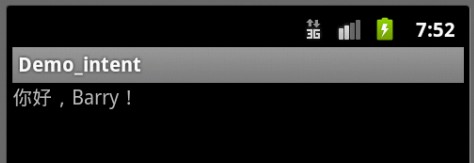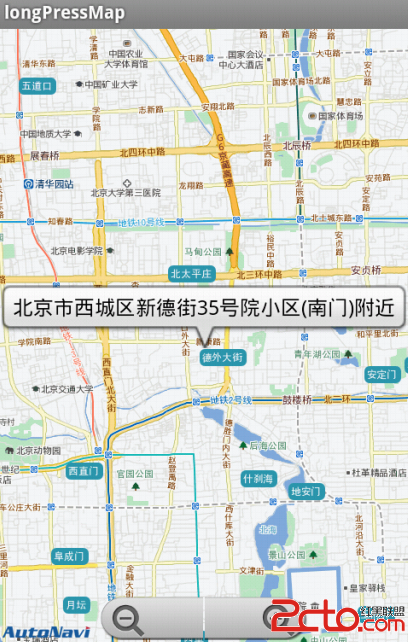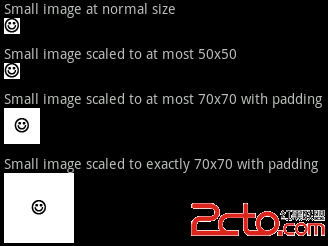Android本地视频播放器开发--ffmpeg解码视频文件中的音频
[cpp]
#include <stdio.h>
#include <stdlib.h>
#include <string.h>
#include <assert.h>
#include <android/log.h>
// for native audio
#include <SLES/OpenSLES.h>
#include <SLES/OpenSLES_Android.h>
#include "VideoPlayerDecode.h"
#include "../ffmpeg/libavutil/avutil.h"
#include "../ffmpeg/libavcodec/avcodec.h"
#include "../ffmpeg/libavformat/avformat.h"
#define LOGI(...) ((void)__android_log_print(ANDROID_LOG_INFO, "graduation", __VA_ARGS__))
AVFormatContext *pFormatCtx = NULL;
int audioStream, delay_time, videoFlag = 0;
AVCodecContext *aCodecCtx;
AVCodec *aCodec;
AVFrame *aFrame;
AVPacket packet;
int frameFinished = 0;
// engine interfaces
static SLObjectItf engineObject = NULL;
static SLEngineItf engineEngine;
// output mix interfaces
static SLObjectItf outputMixObject = NULL;
static SLEnvironmentalReverbItf outputMixEnvironmentalReverb = NULL;
// buffer queue player interfaces
static SLObjectItf bqPlayerObject = NULL;
static SLPlayItf bqPlayerPlay;
static SLAndroidSimpleBufferQueueItf bqPlayerBufferQueue;
static SLEffectSendItf bqPlayerEffectSend;
static SLMuteSoloItf bqPlayerMuteSolo;
static SLVolumeItf bqPlayerVolume;
// aux effect on the output mix, used by the buffer queue player
static const SLEnvironmentalReverbSettings reverbSettings =
SL_I3DL2_ENVIRONMENT_PRESET_STONECORRIDOR;
// file descriptor player interfaces
static SLObjectItf fdPlayerObject = NULL;
static SLPlayItf fdPlayerPlay;
static SLSeekItf fdPlayerSeek;
static SLMuteSoloItf fdPlayerMuteSolo;
static SLVolumeItf fdPlayerVolume;
// pointer and size of the next player buffer to enqueue, and number of remaining buffers
static short *nextBuffer;
static unsigned nextSize;
static int nextCount;
// this callback handler is called every time a buffer finishes playing
void bqPlayerCallback(SLAndroidSimpleBufferQueueItf bq, void *context)
{
assert(bq == bqPlayerBufferQueue);
assert(NULL == context);
// for streaming playback, replace this test by logic to find and fill the next buffer
if (--nextCount > 0 && NULL != nextBuffer && 0 != nextSize) {
SLresult result;
// enqueue another buffer
result = (*bqPlayerBufferQueue)->Enqueue(bqPlayerBufferQueue, nextBuffer, nextSize);
// the most likely other result is SL_RESULT_BUFFER_INSUFFICIENT,
// which for this code example would indicate a programming error
assert(SL_RESULT_SUCCESS == result);
}
}
void createEngine(JNIEnv* env, jclass clazz)
{
SLresult result;
// create engine
result = slCreateEngine(&engineObject, 0, NULL, 0, NULL, NULL);
assert(SL_RESULT_SUCCESS == result);
// realize the engine
result = (*engineObject)->Realize(engineObject, SL_BOOLEAN_FALSE);
assert(SL_RESULT_SUCCESS == result);
// get the engine interface, which is needed in order to create other objects
result = (*engineObject)->GetInterface(engineObject, SL_IID_ENGINE, &engineEngine);
assert(SL_RESULT_SUCCESS == result);
// create output mix, with environmental reverb specified as a non-required interface
const SLInterfaceID ids[1] = {SL_IID_ENVIRONMENTALREVERB};
const SLboolean req[1] = {SL_BOOLEAN_FALSE};
result = (*engineEngine)->CreateOutputMix(engineEngine, &outputMixObject, 1, ids, req);
assert(SL_RESULT_SUCCESS == result);
// realize the output mix
result = (*outputMixObject)->Realize(outputMixObject, SL_BOOLEAN_FALSE);
assert(SL_RESULT_SUCCESS == result);
// get the environmental reverb interface
// this could fail if the environmental reverb effect is not available,
// either because the feature is not present, excessive CPU load, or
// the required MODIFY_AUDIO_SETTINGS permission was not requested and granted
result = (*outputMixObject)->GetInterface(outputMixObject, SL_IID_ENVIRONMENTALREVERB,
&outputMixEnvironmentalReverb);
if (SL_RESULT_SUCCESS == result) {
result = (*outputMixEnvironmentalReverb)->SetEnvironmentalReverbProperties(
outputMixEnvironmentalReverb, &reverbSettings);
}
// ignore unsuccessful result codes for environmental reverb, as it is optional for this example
}
void createBufferQueueAudioPlayer(JNIEnv* env, jclass clazz, int rate, int channel,int bitsPerSample)
{
SLresult result;
// configure audio source
SLDataLocator_AndroidSimpleBufferQueue loc_bufq = {SL_DATALOCATOR_ANDROIDSIMPLEBUFFERQUEUE, 2};
// SLDataFormat_PCM format_pcm = {SL_DATAFORMAT_PCM, 2, SL_SAMPLINGRATE_16,
// SL_PCMSAMPLEFORMAT_FIXED_16, SL_PCMSAMPLEFORMAT_FIXED_16,
// SL_SPEAKER_FRONT_LEFT | SL_SPEAKER_FRONT_RIGHT, SL_BYTEORDER_LITTLEENDIAN};
SLDataFormat_PCM format_pcm;
format_pcm.formatType = SL_DATAFORMAT_PCM;
format_pcm.numChannels = channel;
format_pcm.samplesPerSec = rate * 1000;
format_pcm.bitsPerSample = bitsPerSample;&
补充:移动开发 , Android ,




